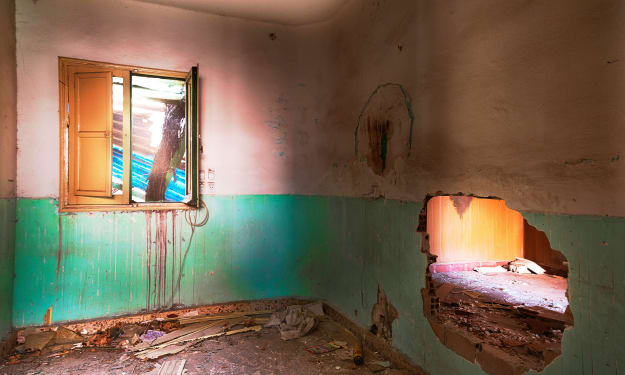Chernobyl Disaster
"Remembering Chernobyl: A tragic legacy of a nuclear disaster that forever changed our perception of nuclear power and its consequences."

The Chernobyl Nuclear Power Plant, located near the town of Pripyat in northern Ukraine, is infamous for the catastrophic nuclear accident that occurred there on April 26, 1986. The accident at the Chernobyl plant is considered one of the worst nuclear disasters in history.
During a safety test, a combination of design flaws and operator errors led to a sudden power surge in Reactor 4, resulting in a steam explosion and subsequent fire. The explosion released a large amount of radioactive materials into the atmosphere, causing immediate deaths and long-term health consequences for people in the surrounding areas.
The Chernobyl accident prompted the evacuation of the nearby town of Pripyat and the establishment of an exclusion zone around the plant. The exclusion zone covers an area of approximately 2,600 square kilometers and remains largely uninhabited to this day.
After the accident, efforts were made to contain the radiation and prevent further releases. A concrete sarcophagus, known as the "Chernobyl Shelter," was hastily constructed to enclose the damaged reactor and contain the radioactive materials. However, over time, concerns about the structural integrity of the shelter led to the development of a more permanent solution.
In 2016, a new confinement structure called the New Safe Confinement (NSC) was completed. The NSC is an enormous arch-shaped structure built over the damaged reactor, designed to provide a more secure containment of the radioactive materials and allow for the eventual dismantling of the old shelter.
Today, the Chernobyl plant remains a symbol of the dangers and risks associated with nuclear power. The area around the plant, including the abandoned city of Pripyat, has become a tourist attraction known as the Chernobyl Exclusion Zone. Visitors can take guided tours to explore the abandoned buildings and learn about the history and consequences of the disaster.
Efforts are also ongoing to manage and monitor the long-term effects of the accident on the environment and the health of the local population. The area continues to be closely studied by scientists and researchers to better understand the impact of the Chernobyl disaster on ecosystems and human health.
The Chernobyl disaster occurred due to a combination of design flaws and operator errors during a safety test being conducted at the Chernobyl Nuclear Power Plant. Here's a breakdown of the events leading to the accident:
Safety Test: On April 26, 1986, the Chernobyl plant was scheduled to perform a safety test on Reactor 4. The purpose of the test was to simulate a power outage and assess whether the reactor's cooling system could still function in such a scenario.
Power Reduction: To prepare for the test, the operators had to reduce the reactor's power output. However, during this process, the power level dropped to a very low level, which was not suitable for conducting the test.
Violation of Safety Protocols: In order to continue the test, the operators bypassed several safety systems and disabled critical safety features, including the automatic shutdown mechanisms and some control rods. These actions were in violation of established safety protocols.
Power Surge: When the test began, the reactor's power began to decrease. However, due to a flaw in the reactor's design, the insertion of the control rods caused an initial temporary surge in power known as a positive void coefficient. This led to an increase in reactor power instead of the intended decrease.
Steam Explosion: As the power continued to rise uncontrollably, a massive buildup of steam occurred inside the reactor. This led to a steam explosion that ruptured the reactor vessel, releasing radioactive material into the atmosphere.
Fire and Radioactive Release: The explosion ignited a fire, which further contributed to the release of radioactive materials. The fire burned for nine days, emitting large amounts of radioactive smoke and debris into the air. The wind carried the radioactive plume across a wide area, contaminating nearby regions and spreading radioactive particles over a significant distance.
The combination of the steam explosion and subsequent fire, along with the release of radioactive materials, resulted in the Chernobyl disaster. The explosion and subsequent radiation release caused immediate deaths and resulted in long-term health consequences for the people exposed to high levels of radiation. The environmental impact was also severe, leading to contamination of land, water, and ecosystems in the surrounding areas.





Comments
There are no comments for this story
Be the first to respond and start the conversation.